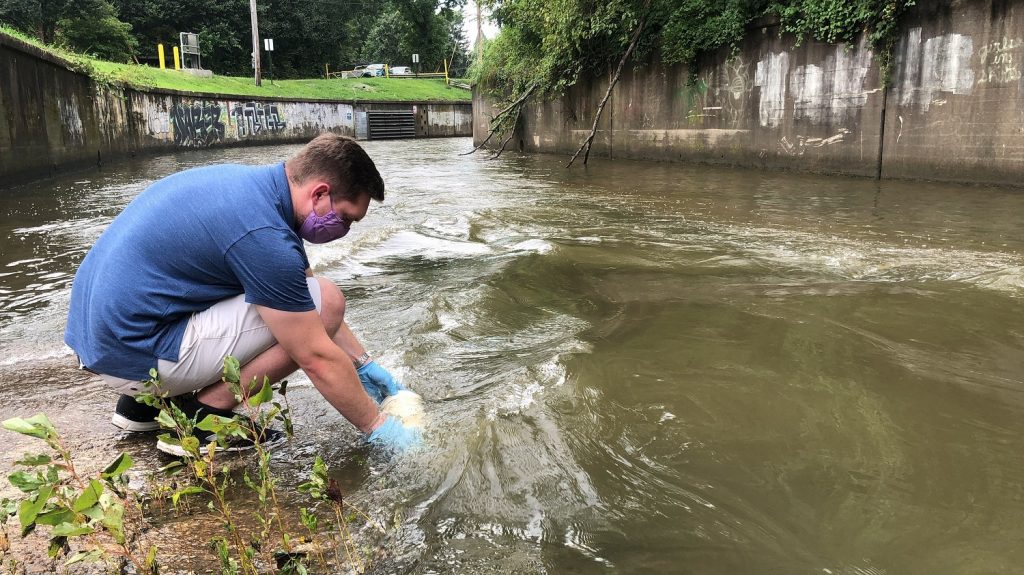New research has revealed the sheer scale of the work needed for New Zealand to achieve its water quality targets and what areas need the greatest effort

The research, funded by Our Land and Water, evaluates the current state of four contaminants (nitrogen, phosphorus, Escherichia coli, and sediment) in rivers, lakes, and estuaries across Aotearoa New Zealand.
This is the first assessment of the ‘bottom lines’ for all four contaminants across the whole country, and reveals the approximate size of the job required to achieve the minimum requirements set in our regulations.
Achieving the contaminant reductions required by the national regulations will be extremely challenging, say researchers, particularly in catchments where the dominant source of all four contaminants is land that is under pastoral farming.
Substantial reductions of at least one contaminant are required in almost all regions. Many rivers, lakes and estuaries exceed the bottom line for more than one contaminant. This adds to the challenge, because actions to reduce one contaminant may not reduce another, so more effort, time and investment will be required to reduce multiple contaminants.
The research assessed the reduction in contaminant loads required to achieve New Zealand’s national bottom lines, a set of minimum acceptable states for our freshwater specified in the National Policy Statement for Freshwater Management 2020 (NPS-FM). (The current attributes for nitrogen and phosphorus were defined in the 2014 version of the NPS-FM, for E. coli in the 2017 NPS-FM, and for sediment and nitrate toxicity in the NPS-FM 2020.)
Three-quarters of all land in Aotearoa is contributing more E. coli to our water than is allowed – a much greater area than for the other three contaminants.
“Reducing E. coli loads to the minimum acceptable state is perhaps even more challenging than indicated by the map,” says research lead Dr Ton Snelder, director of LWP. “The maps produced by this study highlight the entire area of a catchment where contaminant reduction is needed – but this includes land largely untouched by humans, such as the DOC estate. That means significant action needs to be taken to reduce E. coli entering water from the areas of land that are being managed, and in particular land being used to produce food.”
This research does not challenge the regulatory bottom lines defined by the NPS-FM. “Moving towards these bottom lines is currently the best option we have for improving ecosystem health and swimmability in rivers, lakes and estuaries with poor water quality,” says Dr Jenny Webster-Brown, director of Our Land and Water. “However, the report contains important new knowledge about the scale of the challenge.”
The research has generated maps that depict catchments according to the size of the load reductions required. This indicates where the greatest effort is needed to reduce water contamination to meet the national bottom lines.
This information is critical to helping government and regional councils understand where community expectations for water quality can be met through improvements in farm practice, and where current land uses or intensity may be unsuitable. It can also help farmers in degraded catchments decide whether to continue investing in mitigation actions or consider making changes to land use or land-use intensity.
Policymakers in government and regional councils can use this study to guide the implementation of freshwater regulation, helping ‘size up’ the job ahead and set realistic expectations for the time, support and investment required to restore health to our rivers, lakes and estuaries.
The analysis used digital representation of New Zealand’s 650,000 river segments, 961 lakes and 419 estuaries and their catchment area. The research used models informed by data collected at 850 long-term water quality monitoring sites.
There are several sources of uncertainty in this analysis, outlined in the report. “This confirms that decisions by policymakers will ultimately need to be made despite such uncertainty,” says Dr Snelder. The study authors confirm they are 95% confident that load reductions are required for most contaminants in most regions, to achieve the minimum acceptable states for our freshwater.
Summary of report findings
Waterways in some regions can be more susceptible to one contaminant than others. Regions prone to erosion (such as Manawatū-Wanganui, Waikato and Otago) have larger sediment load reductions required. Large proportions of Canterbury and Southland have high intensity pastoral land use, which is reflected in larger load reductions required for nitrogen.
There is significant variation between regions. For example, the West Coast requires low levels of reduction for all four contaminants, while in other regions such as Manawatū-Wanganui large reductions are needed for all four contaminants.
There is also considerable variation within regions, where some catchments require much greater reductions than others.
Some land largely untouched by humans is upstream from rivers, lakes and estuaries requiring load reductions to comply with national bottom lines, and is therefore captured by the maps produced by this study. The full catchment area is shown in the maps for completeness. Action does not need to be taken on land where non-compliance is due to naturally occurring processes, under Clause 3.32 of the NPS-FM.
Sediment load reductions are required for catchments comprising 49% of the land area of New Zealand. The required sediment load reductions are highest in Otago (338%), Manawatū (58%), Canterbury (49%) and Waikato (47%).
The Otago load reduction requirement exceeds 100% because the estimated upstream reductions can be larger than the predicted load at the bottom of the catchment. This is because sediment is deposited in lakes or floodplains as it is transported downstream, for example, in the Kawarau and Shotover rivers.
Phosphorus: Reductions in total phosphorus loads are required for catchments comprising 11% of the land area of New Zealand. The required total phosphorus load reduction is highest in Otago (13%), Manawatū (12%) and Southland (12%).
Nitrogen: Reductions in total nitrogen loads are required for catchments comprising 20% of the land area of New Zealand. The required total nitrogen load reduction is highest in Canterbury (44%), Southland (41%) and Otago (33%).
Escherichia coli: Reductions in E. coli loads are required for catchments comprising 79% of the land area of New Zealand. E. coli load reductions required are highest in Waikato (91%), Manawatū (90%), Gisborne (85%), Northland (80%), Auckland (73%), and Taranaki (72%).
Multiple contaminants: Some areas require the load of more than one contaminant to be reduced by more than 30%. Load reductions of over 30% are more likely to require some change of land use or intensity.
Load reductions of over 30% for two contaminants are required in 24% of the land area of New Zealand; for three contaminants in 6% of land area; and all four contaminants in 2% of land area.
Report: Nitrogen, phosphorus, sediment and Escherichia coli in New Zealand’s aquatic receiving environments: Comparison of current state to national bottom lines. Ton Snelder, Hugh Smith, David Plew, Caroline Fraser. LWP Client Report 2023-06, November 2023 https://ourlandandwater.nz/outputs/comparison-of-current-state-to-nbls/








